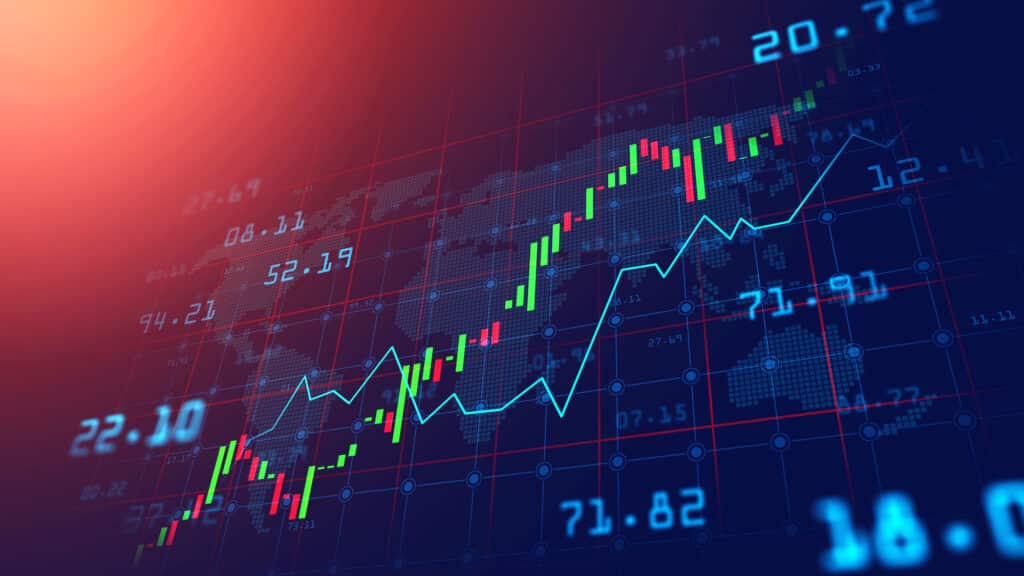Views about technical analysis vary widely across the investor and trader world, with some believing the analysis of charts and price patterns is a worthless endeavour, whilst others believe it critical to any investing or trading strategy. Many misconceptions and falsehoods have, therefore, been formed with respect to charting, as technical analysis is also known. The key to using and benefiting from technical analysis, is via good education, understanding and application. This can then allow the investor or trader to utilise technical analysis to generate profits.
We will now explore some of the misunderstandings regarding technical analysis and highlight why these are misinterpretations.

1. Technical analysis only achieves modest success
There are many traders who have achieved impressive success as measured by profits over time by using technical analysis. Homma Munehisa, the father of candlestick patterns was a multi-billionaire in his time, Edson Gould’s market calls were legendary and Jesse Livermore, on whom “Reminiscences of a Stock Operator” by Edwin Lefevre is based, one of the most widely read books on investing. Read more about famous traders.
2. Technical analysis is only for individual traders
Yes, many individual traders use technical analysis. Large financial markets companies such as hedge funds, mutual funds and investment banks use technical analysis in their investing and trading strategies. Research teams solely dedicated to technical analysis are employed by these companies, clearly in order to increase profits.
3. Technical analysis is simple
Any form of analysis, including technical analysis requires good education, understanding and due diligence. Although technical analysis may seem simple, it requires dedication and a strong knowledge base to be able to successfully apply it to financial market assets. Like any form of analysis, traders and investors should apply effort and time when employing technical analysis.

4. Technical analysis has a poor Hit Rate
Another criticism of technical analysis is that it has a poor Hit Rate, that losing trades with this approach outnumber the winning trades. In the first instance, this is not necessary the case anyhow, it would depend on how technical analysis is applied that determines the particular Hit Rate for a strategy. However, a successful strategy does not necessarily require a high percentage of winning trades, that is a high Hit Rate anyhow. It is the value of the winning trades versus the value of losing trades that is critical. This is where having a high Reward to Risk Ratio is key. Technical analysis strategies often provide traders with very favourable set ups from a Reward Risk Ratio perspective.
5. Technical analysis is only good for short-term trading
In many cases technical analysis is used to looks at shorter-term trends than a fundamental analysis approach. However, technical analysis is not only relevant to short-term trading, as the time periods used can be from minutes to weeks, or years. Modern technical analysis stems from Dow Theory, which was used to predict major bull and bear trends in the stock market.
6. Technical analysis automation can make quick and easy profits
There area plethora of off-the-shelf, automated, technical analysis software products and signal generators available. They all allude to or promise profits, BUT there are never any guarantees when trading or investing in financial markets. Many beginner traders are hooked by automated charting systems, but true technical analysis requires more, there is a subjective side. Traders should utilise their knowledge and understanding before applying any automated results in their trading. Nearly all systems have a shelf-life.
7. All technical approaches and indicators are applicable to all markets
Not all technical analysis approaches work the same fir all markets, across differing financial asset classes. Each asset class has its own market nuances, and therefore may require differing approaches, selective application and different indicators. Which technical analysis approach or indicator that is relevant could be determined by market volatility, seasonality, market exposure to exogenous factors and the impact from certain fundamentals or geopolitical events. Technical analysis approaches and strategies, or technical indicators cannot necessarily be applied uniformly across differing asset classes.
8. Technical analysis price targets and objectives are precise
Price predictions and target that are produced by technical analysis are often viewed as and expected to be very accurate. In reality, any price objective from a charting perspective should be taken as an approximation, as opposed to a precise target level. The projections are just that, projections, a probability as opposed to a guarantee of future outcomes.
Technical analysis misconceptions put right!
Above we have looked at the concept of technical analysis and some of the many misconceptions and unfair criticisms of this approach to trading and investing in financial markets.
We hope we have managed to debunk many of the myths that surround the technical analysis approach and reinforced the view that charting is an important tool for any individual trailer to educate themselves about, fully understand and be able to apply.